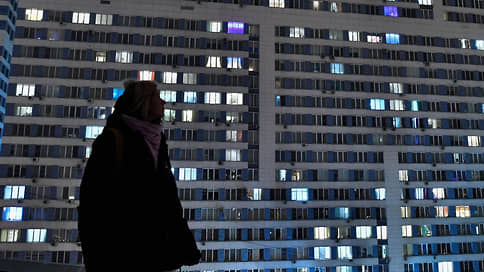Moscow has opened the harvesting season
[ad_1]

The active entry of investors into the market and the decline in demand have led to an excess of rental housing in Moscow. The number of offered apartments here increased by almost 2.5 times over the year, and the share of supply in new houses reached 13%. Renting apartments under these conditions has fallen in price by more than 20% over the year, stronger than in other major cities of the country. The volume of rental supply in the city will only grow, experts are waiting.
The volume of supply of real estate for long-term lease in Moscow at the beginning of February reached 30,000 lots, which is 2.4 times more than a year earlier, according to Cyan.Analytics. Daria Khlystova, deputy director of the rental department at Etazhi, notes that Moscow is characterized by a more pronounced increase in rental supply than the country as a whole. According to her, the volume of exposition in the capital increased by 25-30% over the year against 15% in the country. In the high-budget rental segment, the volume of supply in Moscow increased by 116% over the year, according to Intermark Real Estate.
The dynamics was influenced, among other things, by the entry into the market of investment apartments. According to Cyan.Analytics, the share of apartments in houses commissioned over the past three years accounts for 13% of the total supply of rental housing. At the beginning of 2020, such apartments occupied 8% of the exposition, at the beginning of 2019 – 4%. In “Etazhy” the share of new buildings is estimated at about 10% of the supply. Intermark Real Estate notes an increase in the indicator in the expensive segment from 5–6% to 7% over three years. But in the high-budget segment, it takes an average of two years from completion of construction to the launch of an object on the market, analysts point out.
Preferential mortgage programs in the primary market contributed to a boom in investment demand for new buildings in 2020-2021, and now these apartments are gradually entering the market. But some owners have postponed the sale until prices stabilize in the secondary market, says Daria Khlystova. Demand for rental apartments in new buildings, despite the growing supply, is limited. According to Cyan.Analytics, new houses form about 5% of tenant requests. One of the reasons is the high declared prices. A one-room apartment in a building rented in Moscow since 2020 costs an average of 49.5 thousand rubles. per month, in the object of 2015-2019 – 42 thousand rubles. per month, says Alexei Popov, head of Cyan.Analytics.
The overstocking of the Moscow rental market was influenced not only by investors. Ms. Khlystova also draws attention to the decline in migration inflow. An important factor, according to Elena Kulikova, director of the rental department at Intermark Real Estate, was also the departure of some of the owners and potential tenants abroad. In the high-end segment, rising supply has already led to a noticeable increase in turnaround times as potential tenants scour many options and haggle, she says. The decline in demand was also due to the state of uncertainty, any decisions on transactions related to real estate were postponed, adds NF Group partner Andrey Solovyov.
According to Avito Nedvizhimost, despite the high level of prices for rental housing, Moscow today is the leader in terms of their decline among the largest cities. Over the year, the cost of the average lot in the capital decreased by 21.4%, to 55 thousand rubles. per month. In “Cyan.Analytics” they note a decrease in the cost of “odnushki” for the year by 15%, to 43.5 thousand rubles. In the high-budget segment, the declared prices, according to NF Group, decreased by 10%, in addition, the owners are often ready to discuss a discount of 5-20%.
Alexey Popov is waiting for a further increase in the rental exposure in Moscow, recalling that in 2021-2022 a record amount of real estate was commissioned in the city – 6-7 million square meters. m, against 4-4.5 million square meters. m in 2019-2020. Even if commissioning volumes are lower in 2023, the number of lots in “new” housing already built will be higher than in previous years, he points out. Elena Kulikova adds that a further increase in supply in new homes in the high-budget segment will have a negative impact on demand in objects with a higher degree of depreciation.
[ad_2]
Source link





